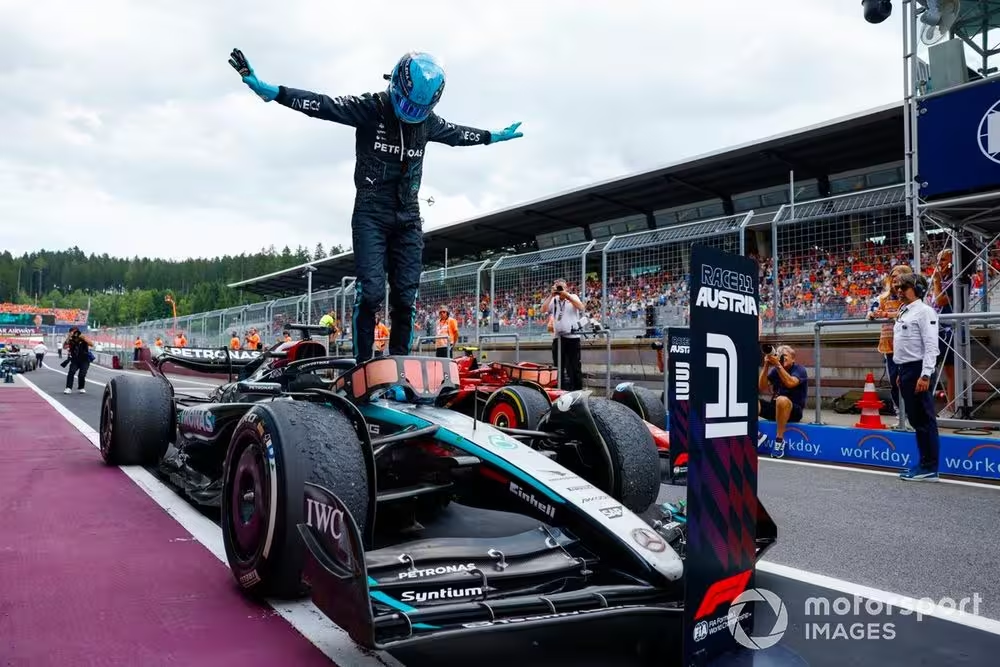George Russell reckons Formula 1’s sliding scale for aerodynamic testing should be based on points, rather than by position, as the allocations for aero simulations were reset after the Austrian GP.
Formula 1’s aerodynamic testing regulations dictate the amount of wind tunnel time and computational fluid dynamics (CFD) capacity that can be used for an “aerodynamic testing period” (ATP) of two months, based on championship position.
This is a sliding scale, where the team that finishes first in the championship starts a new season with 70% of the baseline allowance, in 5% increments up to the 115% multiplier for finishing 10th, in an effort to create closer grids.
This is reset in the middle of the year per the championship order on 30 June, which followed the results of the Austrian Grand Prix.
George Russell, Mercedes-AMG F1 Team, 1st position, celebrates on arrival in Parc Ferme
Photo by: Sam Bloxham / Motorsport Images
Mercedes has benefitted from this rule; after finishing second in last year’s championship, it began the year with 75% of the baseline allowance of aerodynamic testing for the first three ATPs, but its slip to fourth in the constructors’ standings lifts the team to 85%.
This means that the Brackley team receives 32 more wind tunnel runs, eight more hours of “wind-on” time (when airspeed exceeds 15m/s), 200 more allowable geometries, and 40 hours more of wind tunnel occupancy. The team also receives an increase of 0.6MAuh in the metric used for CFD computer resource used.
Red Bull remains at the 70% multiplier as it continues to head the constructors’ championship, while Ferrari and McLaren move up to the 75% and 80% brackets.
RB has moved from the 105% multiplier to the 95% bracket as it goes below the baseline thanks to its improvements this season, while Haas has lost the most. After finishing last in 2023’s championship, the American team was working to the 115% allowance, but it has now moved to the baseline after taking seventh in the championship from Alpine at Austria.
Alpine and Williams have both gained 10% of their previous allocations, as Sauber has gained 5% as it sits bottom of the constructors’ standings so far.

The FIA’s technical regulations defines the geometries – or restricted aero test geometry – as any representation of a car or a subsection of a car to be tested. Applying a change to their dimensions or to the boundary properties within is considered a new geometry, so…
Click Here to Read the Full Original Article at Motorsport.com – Formula 1 – Stories…

